How to Set Up Drip Irrigation for Roses & Landscape Plants (Beginner Guide!)
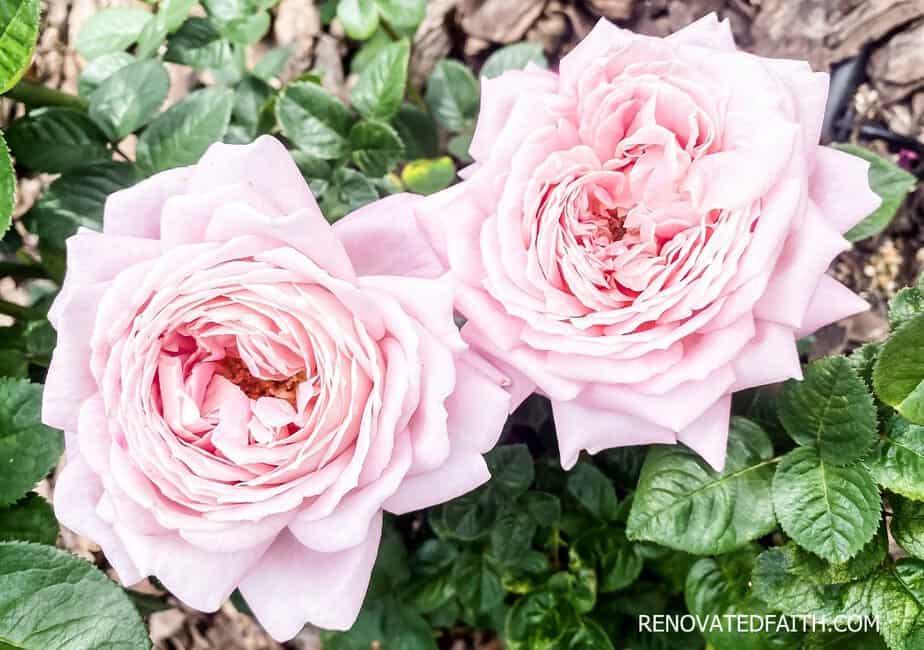
Feel like you spend all your time watering? Here’s an easy tutorial on how to install drip irrigation for roses and landscape plants so your plants thrive year-round.
Living in a warmer climate means you’ll have to endure some hot summers. And if you have a lot of roses, you know how hard it is to keep up with watering!
During the summer heat in Central Texas, my rose bushes need water every other day, which is absolutely miserable as temperatures rise into the 90’s and 100’s.
But watering each plant with a hose can be time-consuming, and it’s hard to know exactly how much absorbs into the root zone. I would much rather spend my time in the heat enjoying my plants instead of struggling to water them in the heat.
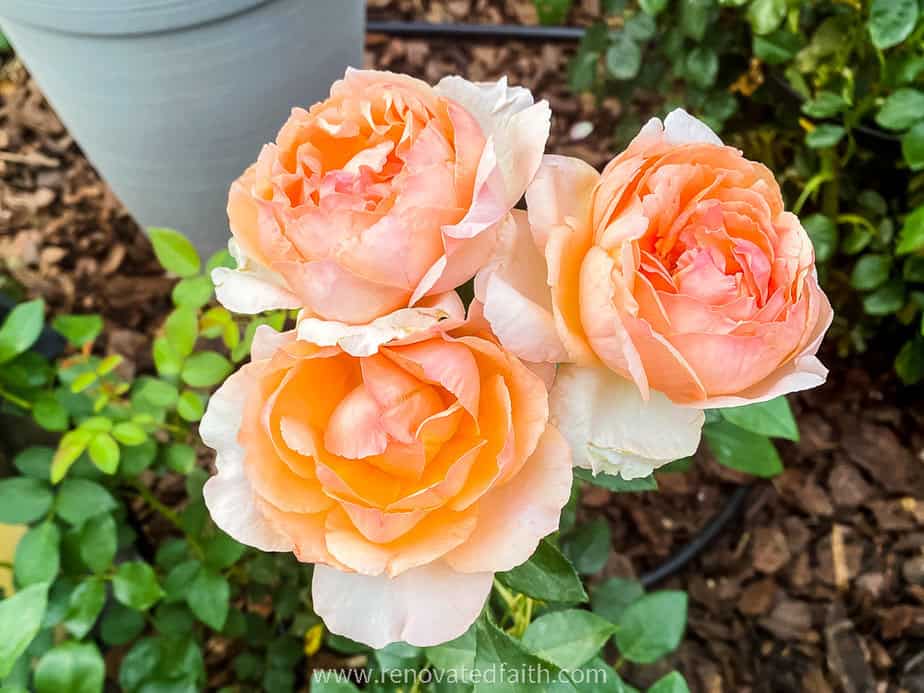
Fortunately, I have installed drip irrigation on all 70 of my rose plants so I can water each with the exact amount of water they need with the turn of a faucet handle. I’ll also show you how to automate it with a timer that you can set with your phone.
Quick Links to Information in this Post
- 1 Benefits of Drip Irrigation
- 2 How Does Drip Irrigation Work?
- 3 Drip Irrigation Installation Guide – Supply List
- 4 How to Install Drip Irrigation for Plants
- 5 Renovate Your Faith: What Kept Me From Conquering My To Do List
- 6 How to Automate Your Drip Setup
- 7 How To Set Up Drip Irrigation for Roses and Landscape Plants
Benefits of Drip Irrigation
I used to water with my garden hose but if you have a lot of plants this is still very time-consuming, especially when you are standing in the sun.
Then, to save time, I added soaker hoses to my beds. But because my flower beds are mounded up, the water just seemed to roll off and never went to the root zone. Talk about frustration. So, I pulled out all of my soaker hoses, replaced with drip irrigation, and I’ll never go back!
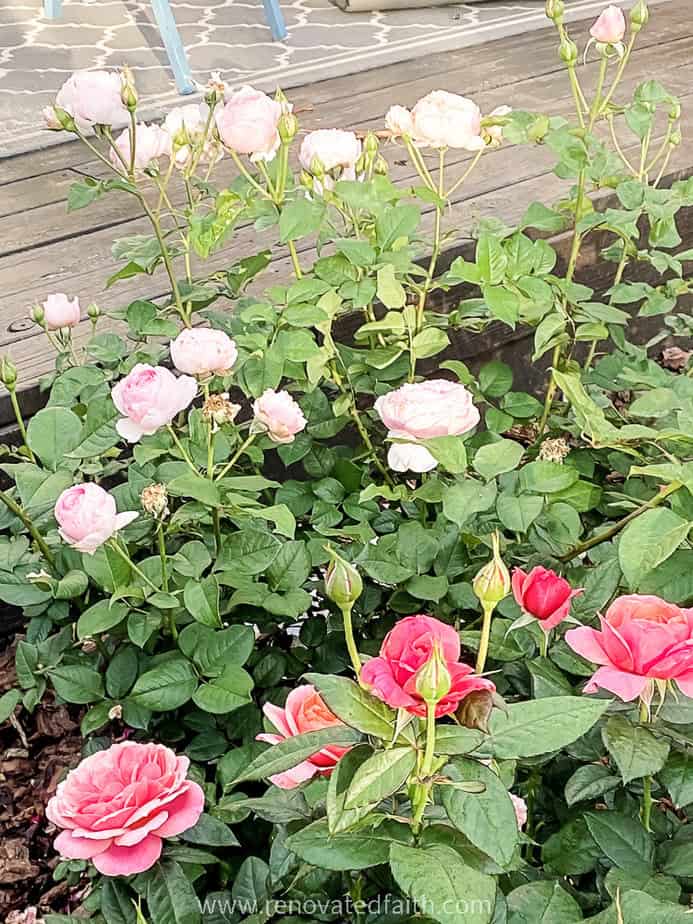
I am excited about drip irrigation because it slowly drips into the soil, getting the soil fully saturated without overwatering. Also, by using pressure-compensating emitters, I can control exactly how much water each plant receives and vary the number of gallons for each plant depending on its needs.
Unlike soaker hoses, which have less water pressure toward the end, drip hoses give consistent pressure throughout the setup.
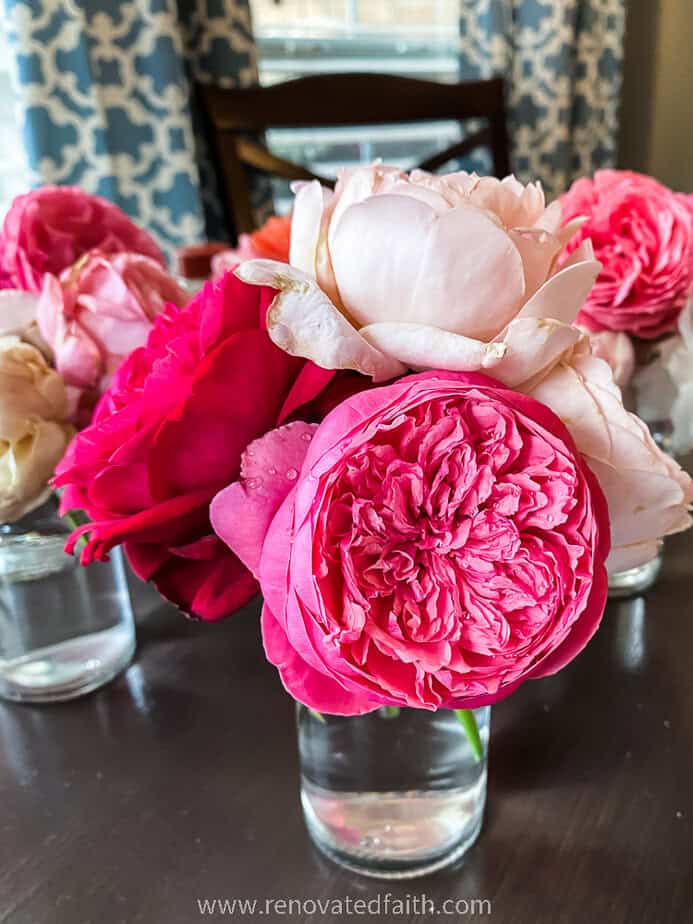
Drip is so much more efficient than soaker hoses or even hand watering, and it saves me so much time. I use two, 2-gallon emitters on most plants, one on each side of the root zone.
Roses need 4-5 gallons of water a week preferably so you just have to do the math to figure out how long to run your system. During the heat of the summer, I do three waterings a week, so since each rose has 4 gallons per hour, each zone runs at around 20 minutes each time. If we get above 100 degrees, I’ll usually tack on about 5 extra minutes.
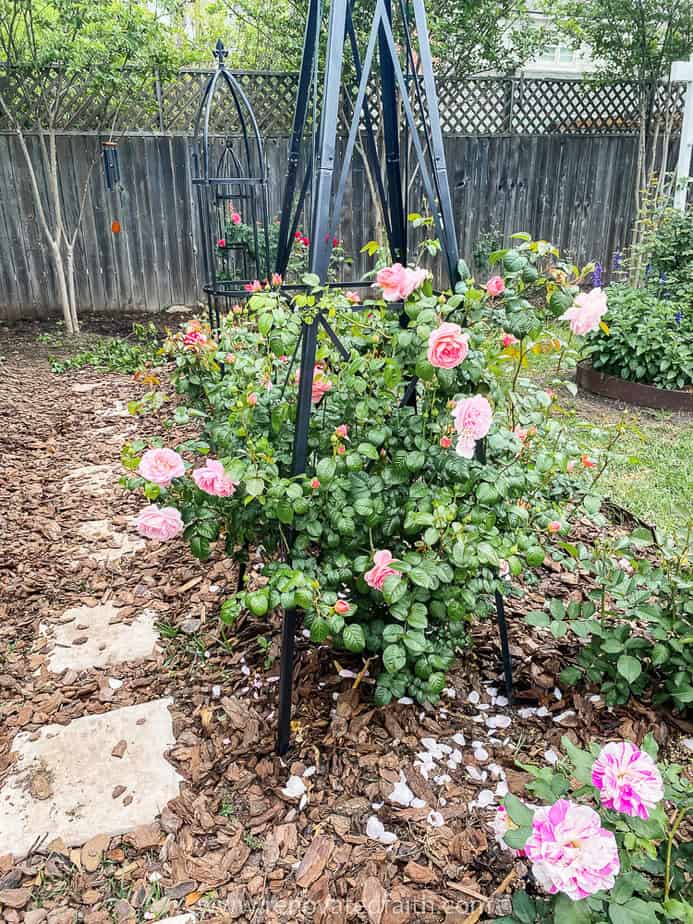
Drip is the way to go with watering roses or landscape plants in hot climates like Texas. It is so draining to be water in the heat even after it gets heart to the point I’ve gotten sick from the heat.
Watering is a huge chore that can be relaxing at nicer times of the year, but in the summer, it can be stressful and physically taxing to just keep everything alive.
Now, the time I can spend outside in the heat is better spent enjoying my plants instead of trying to keep up with their watering routine. You can also get a simple timer to COMPLETELY automate the system.
I also wrote a post on: How to Set Up Drip Irrigation for Potted Plants
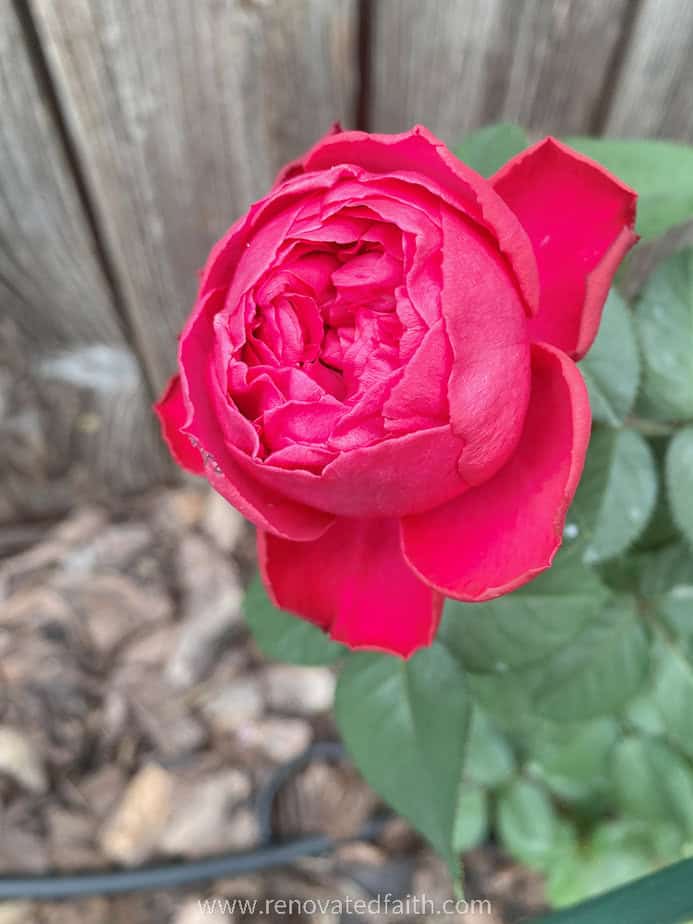
Is Drip Irrigation Difficult to Set Up?
Drip irrigation is so easy! I had a little bit of a learning curve with knowing the best connectors to buy and what connects to what.
But you will completely skip that hassle with this tutorial as I’ll show you what products have worked for me, where to get them, and exactly how to set up your drip landscape plants. These are the instructions I wish I had when I got started.
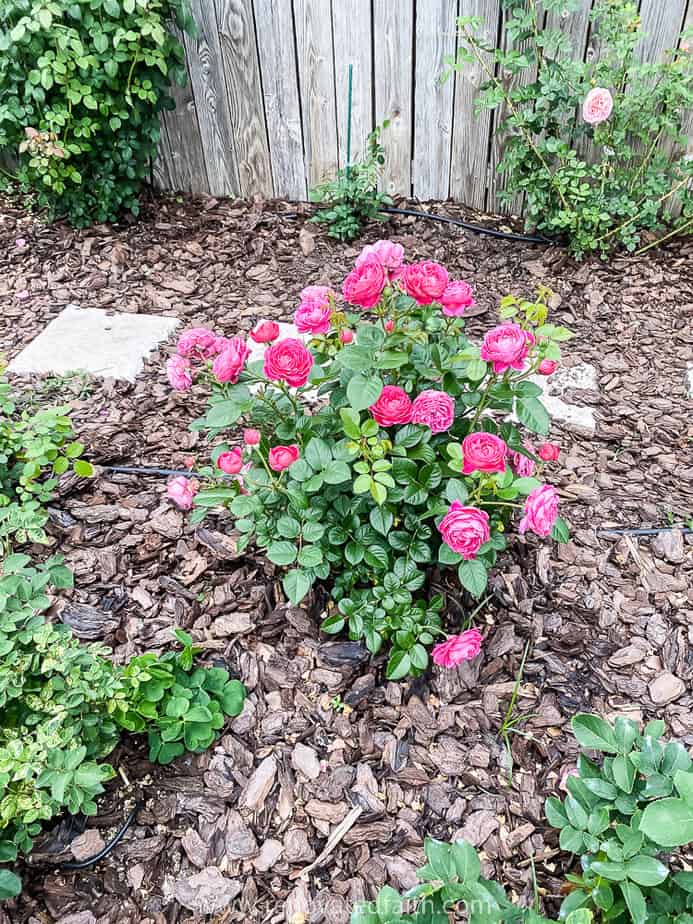
How Does Drip Irrigation Work?
I remember being very intimidated by drip irrigation, and I honestly didn’t know where to start or exactly how to layout the setup. So, let’s get that out of the way right now so I can show you how easy it is to install.
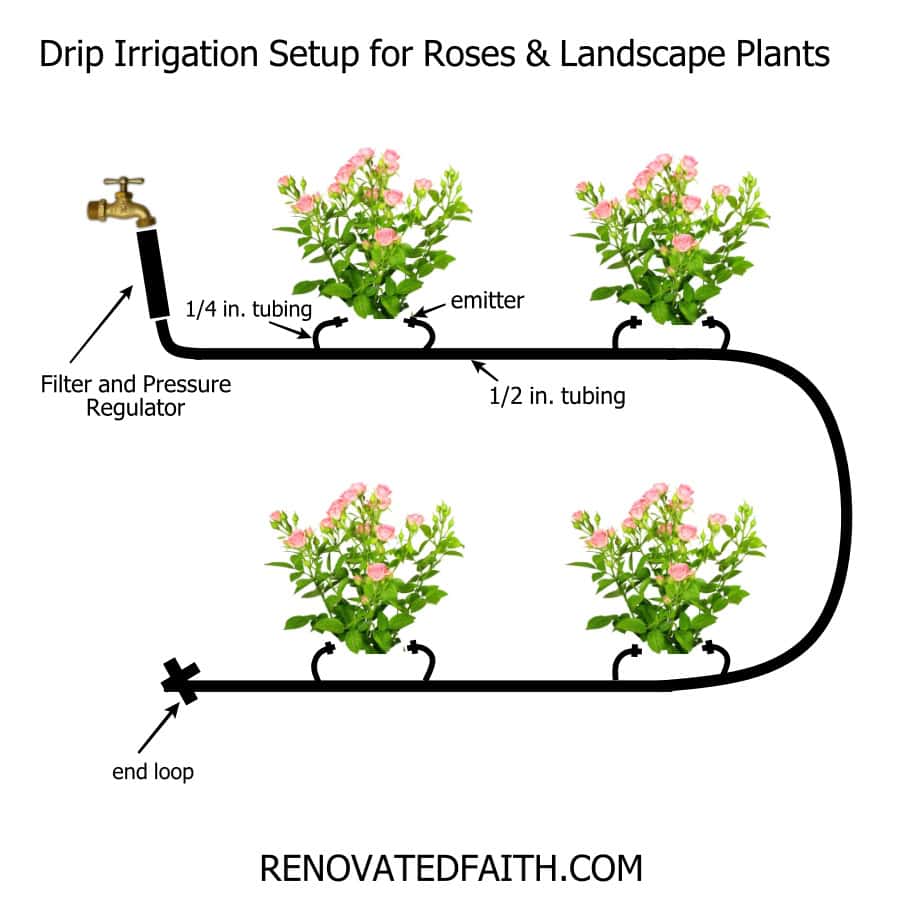
The setup attaches directly to your outdoor hose bibb (faucet), and then it connects to ½-inch tubing. The ½ tubing runs along the plants in your flower bed. Then, you use a small connecter to connect the ¼-inch tubing with the emitter. I like to add an emitter on one side of each plant to water the roots evenly.
Drip Irrigation Installation Guide – Supply List
As an Amazon associate, I use affiliate links but only for products I use and love. There are some drip irrigation kits online but you will end up spending more time and money. The products below are the easiest to use for a great price:
Garden Hose Splitter – This gives you the option to still have a regular garden hose connected to your faucet while your drip is set up. It connects to your outdoor faucet.
Faucet Setup – You need a few things in place before connecting your 1/2 inch line to your outdoor faucet: 1. Hose Filter | 2. Pressure Limiter | 3. Hose Adaptor
*The hose adaptor above is so much easier to use than most and I wish I had known about it for the drip on my roses.
½ Inch Drip Tubing – This is my favorite brand and it’s cheap. This connects to the water filter/PSI regulator/adaptor and will run along your porch or deck behind each potted plant.
¼ Inch Drip Irrigation Coupling (Connector) – These connect the ½ inch tubing to the ¼ inch tubing.
¼ Inch Drip T-Connectors – These connect two lines for larger pot plants.
Drip Irrigation Hole Punch Tool – This will make clean holes in your ½ inch tubing and it comes with goof plugs to fill any accidental holes.
¼ Inch Drip Irrigation Tubing (Distribution Tubing) – This smaller tubing distributes the water to the plants.
Pressure Compensating Emitters – I use two 2-Gallon-Per-Hour emitters on most of my rose shrubs. On climbers I use one 2 GPH and one 4 GPH and on some landscape plates I use or or two 1 GPH. You can add whatever flow you want to meet your plants’ needs. Here is the brand I like: 2 GPH Emitter | 4 GPH Emitter | 1 GPH Emitter
Good Scissors – I use these for everything!
End Loop – This closes off the end of the ½ end tubing but allows you to open it up again. You will only need one of two but all the listings are for 20-ish. I’ve also used a black hair rubber band for this and it works just as well.
Drip Stakes – These help keep the ¼ tubing where it’s supposed to be in the pot so it’s not just the emitter holding it in place.
Yard Staples – These are cheaper than what you’d find in your local home improvement store.
½ Inch Connectors (Optional) – Corner Connectors | T Connectors These are great when you need to make a sharp right angle or split your ½ tubing in two directions.
IMPORTANT: Not all connectors are exactly the dimensions that they say they are and I have run into getting several that do not fit my tubing but I know the connects and ½ inch tubing above do fit together!
How to Install Drip Irrigation for Plants
Before you get started, draw out a diagram to help you know how much to buy and the best way to lay out your setup.
STEP 1: Faucet Setup – How to Connect the Drip Line to the Main Line on your Faucet
Consider using a faucet splitter so you can still use your regular garden hose just by flipping a switch. Screw it onto the faucet.
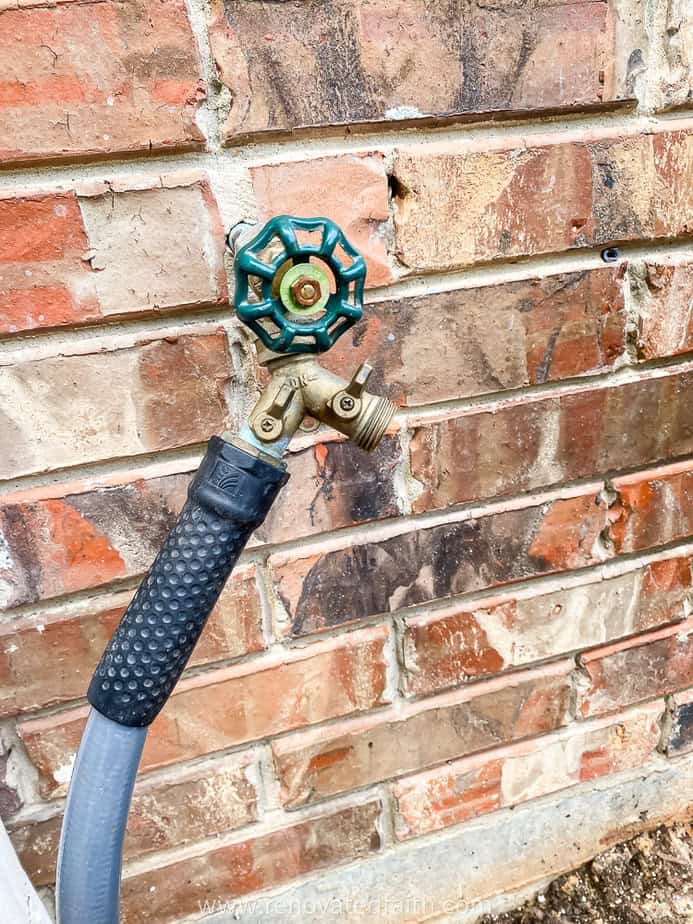
Now screw on the filter, pressure regulator, and adaptor in that order.
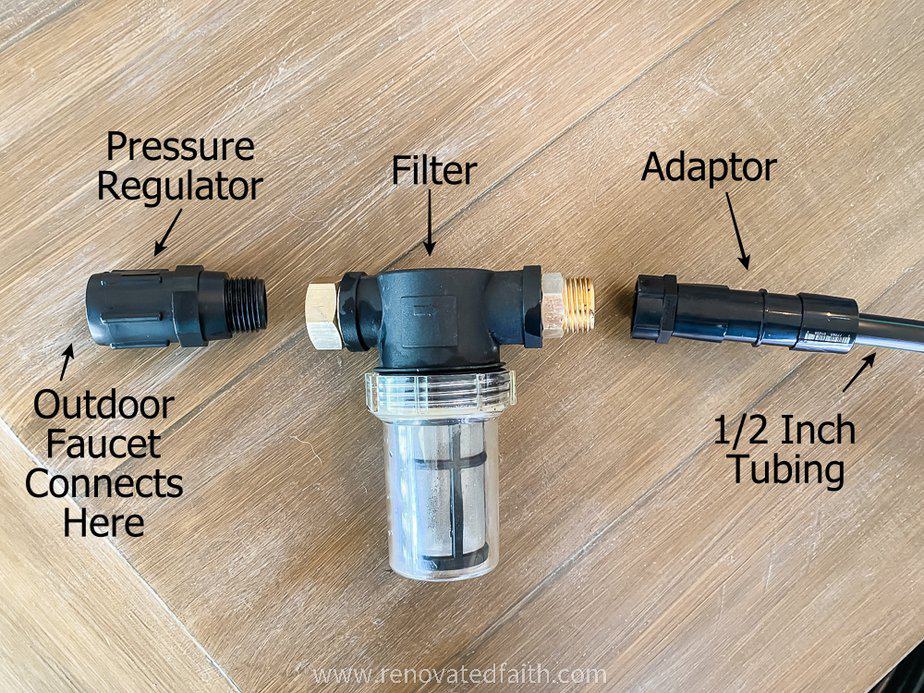
The pressure regulator keeps the water from building up too much pressure and blowing out an emitter. The filter filters out any sediment in your tap water that will clog your emitters.

Connect the end of your ½ inch tubing to the adaptor by sliding it on as far as it will go. It will automatically lock in place.
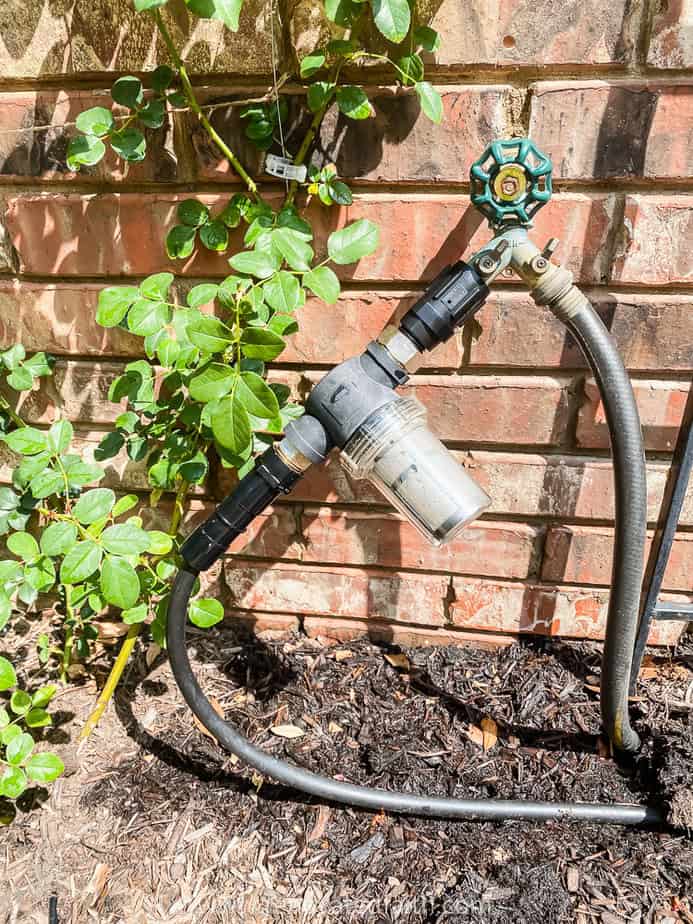
What if your outdoor faucet is not close to your flower bed?
For this problem, I bought a heavy-duty garden hose and buried it about 4 inches deep, and ran it to where my bed was. There is probably a better way to do this with PVC pipe, but this was the fastest and easiest solution for me. There are all different lengths of garden hoses here: Garden Hoses
Here’s an example where I had to bury the garden hose to go from the faucet to my rose bed. The connection between the garden hose and the ½ inch drip is right under the mulch so I can still access it.
STEP 2: Install the 1/2-inch Line
Run your ½ inch tubing a few inches away from the base of your plants. Eventually, your tubing will be covered with mulch.
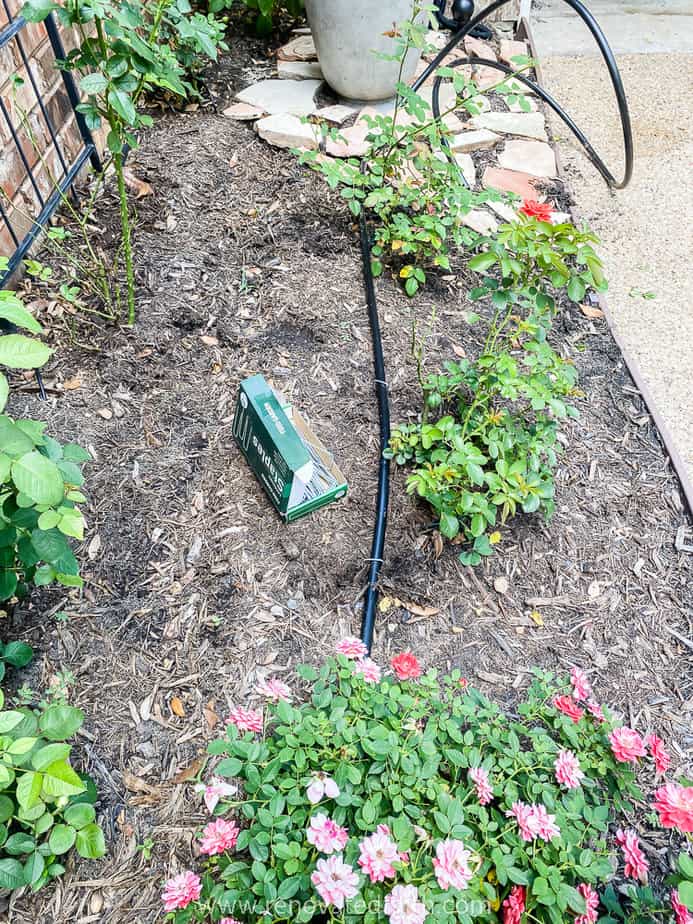
If you have any of the corner or T connectors in your design, now is the time to install those. Simply unscrew the lower part of the connector a little, slide the line on as far as it will go and then tighten the lower part.
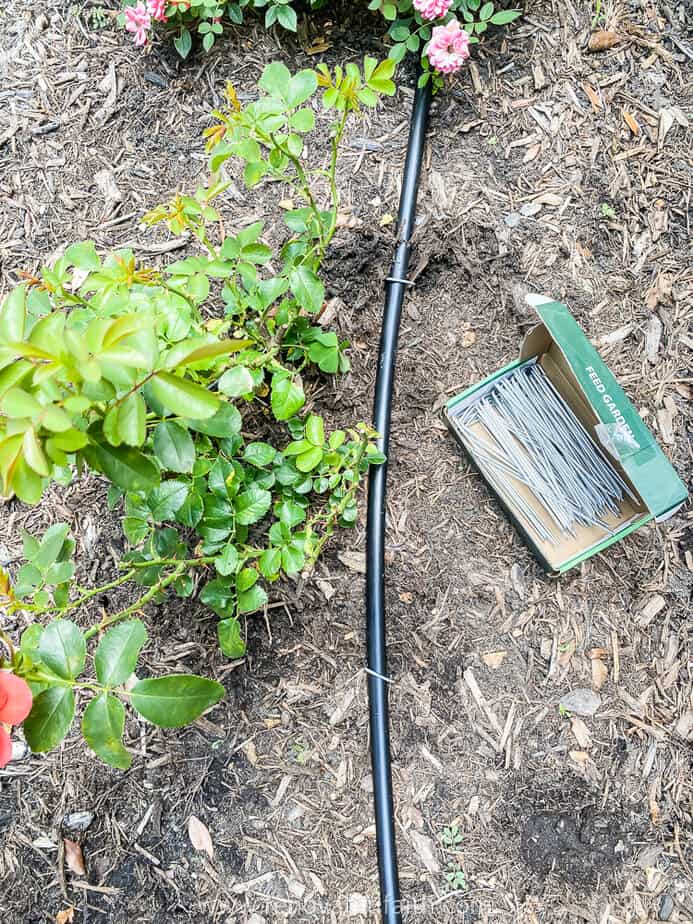
Use the yard staples to keep your tubing in place.
Once you have laid out your ½ inch tubing where you want it, find where you want your tubing to end and add 6 inches to it. Now cut the ½ inch tubing there with your scissors.
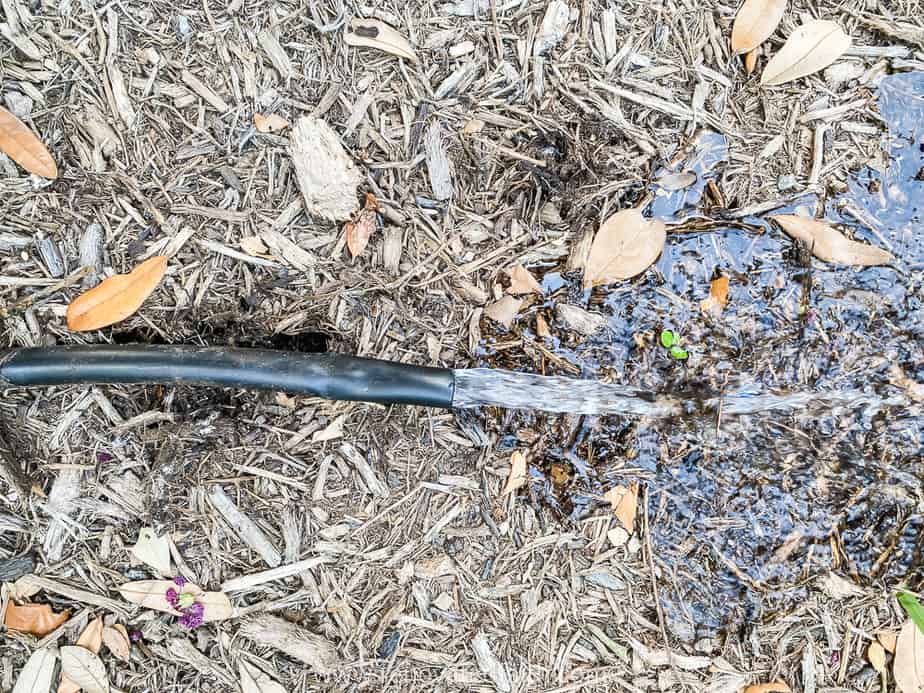
Now, turn on the water to drain the line in order to wash out any dirt out. After a few seconds, turn off the hose.
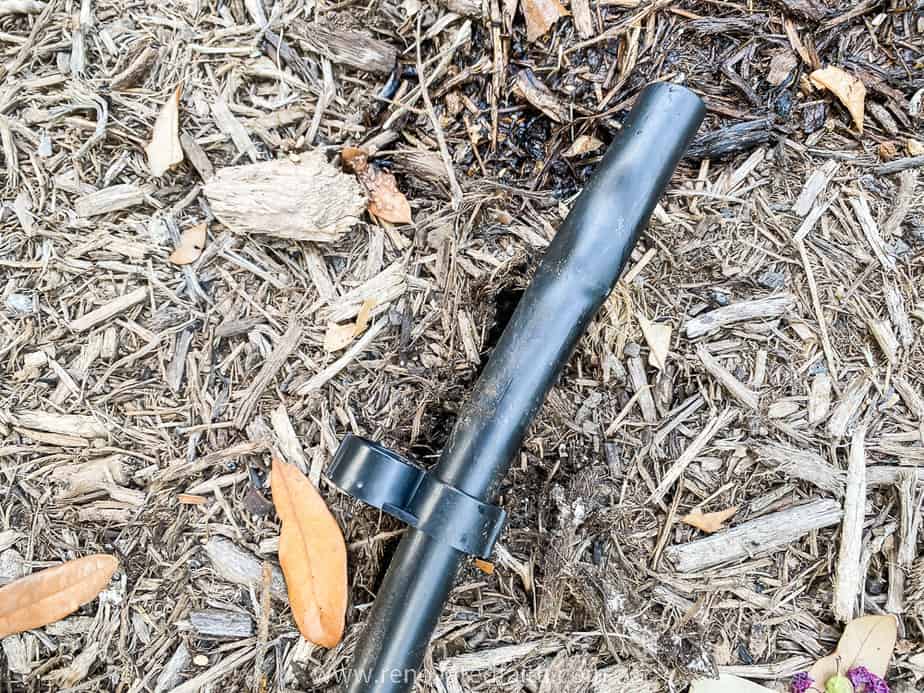
Now, add the end piece like so.

STEP 3: Emitter Setup and Installation
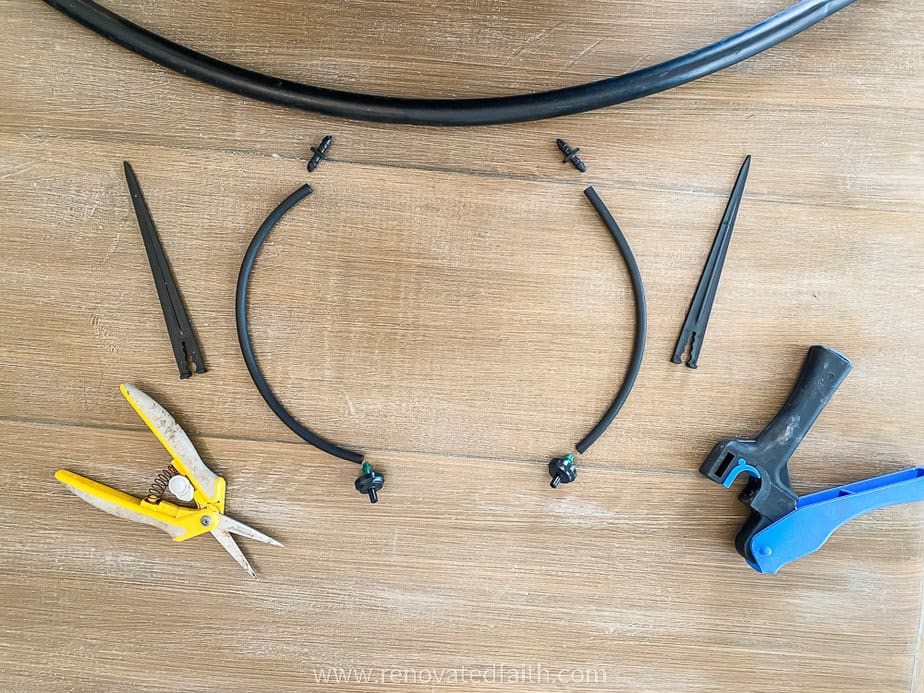
Assemble emitters and distribution tubing (1/4 inch) as shown above. Use a twisting motion to help connect the emiitters and connectors to the ¼ inch line.
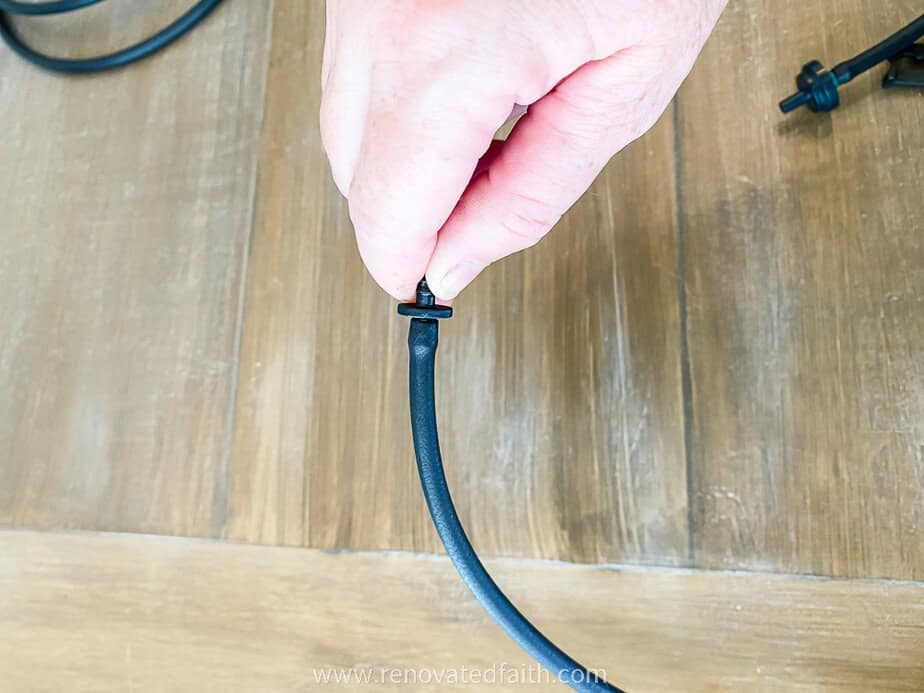
Connect the end of the emitter setup to a ¼ inch connector.
Use your hole puncher to punch a whole in the ½ inch tubing so that each side of the plant can have an emitter on each side. If your hole puncher doesn’t punch all the way through, use scissors or the end of a yard staple to finish making the hole.
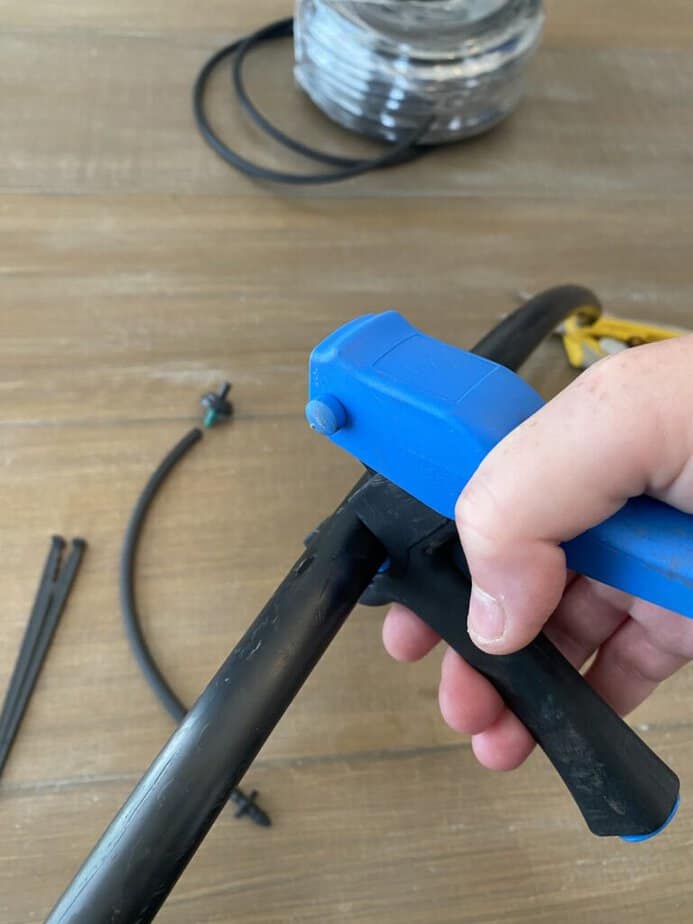

Push the connector of the emitter setup into the hole. You should hear a slight click.
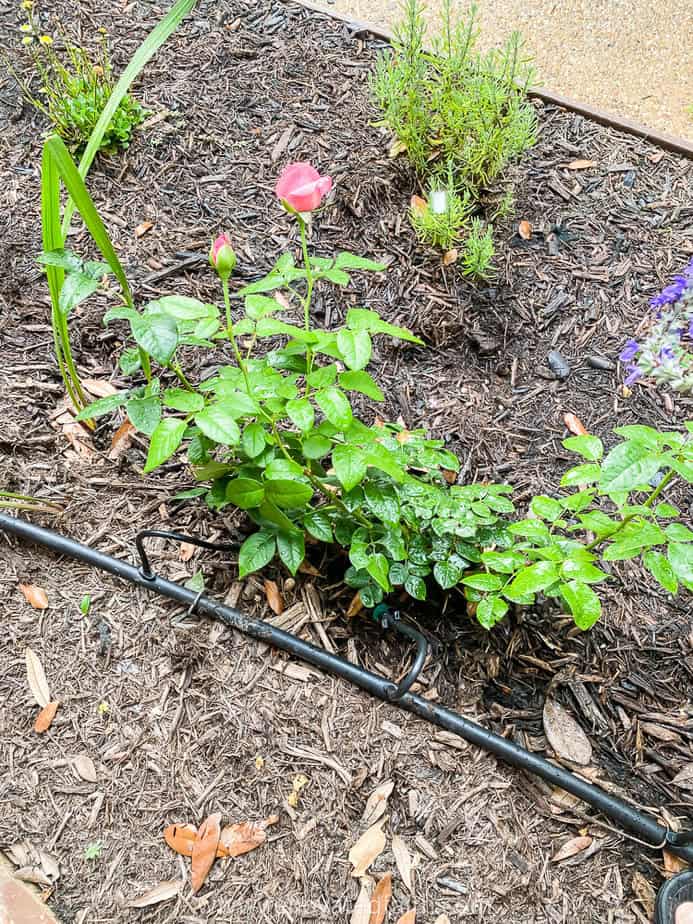
Do this for every plant. If you make a mistake, no worries, just fill the hole with a goof plug!
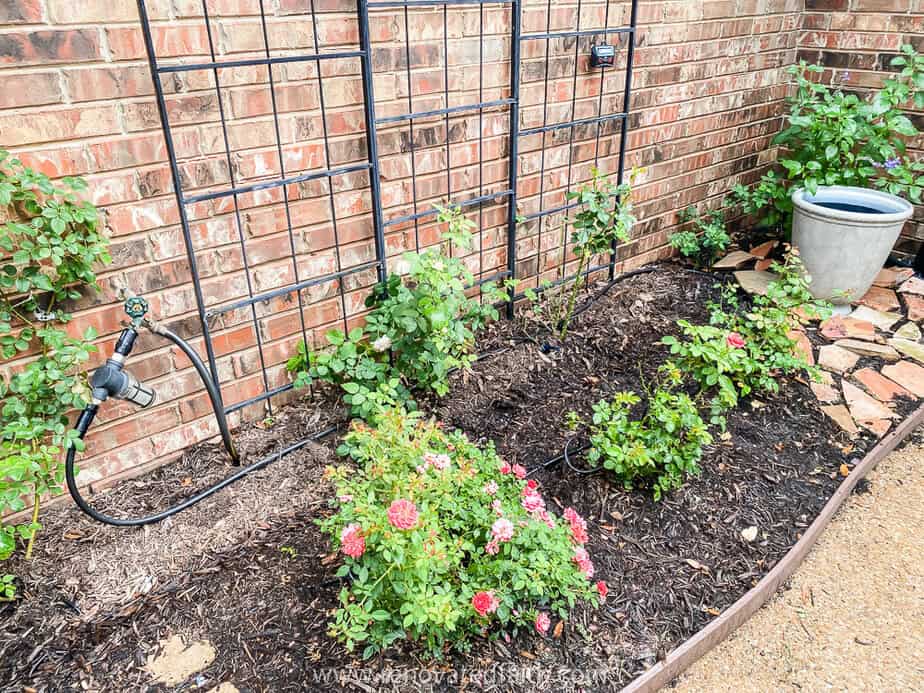
STEP 4: Test Your Drip Irrigation Setup
Now turn on the water and make sure all the emitters to each plant are flowing.
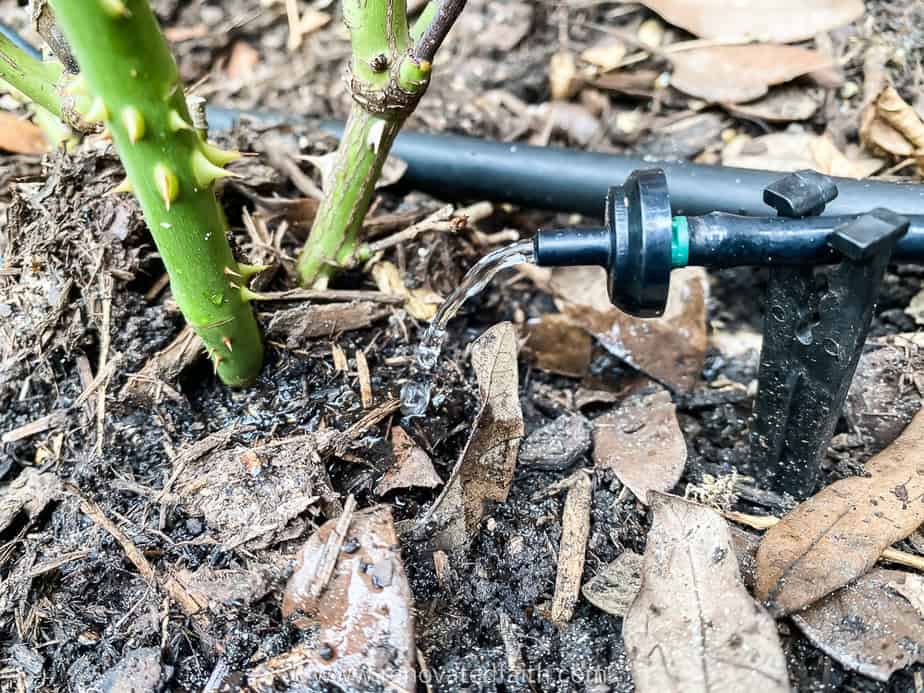
IMPORTANT: If you turn on your system and an emitter pops out, simply reattach it, but this time push it all the way onto the 1/4 line as far as it will go.
I even used my drop irrigation setup to connect an emitter to my fountain. I made a fountain out of a plastic planter and you can see how to make it here: DIY Solar Fountain From a Plastic Planter
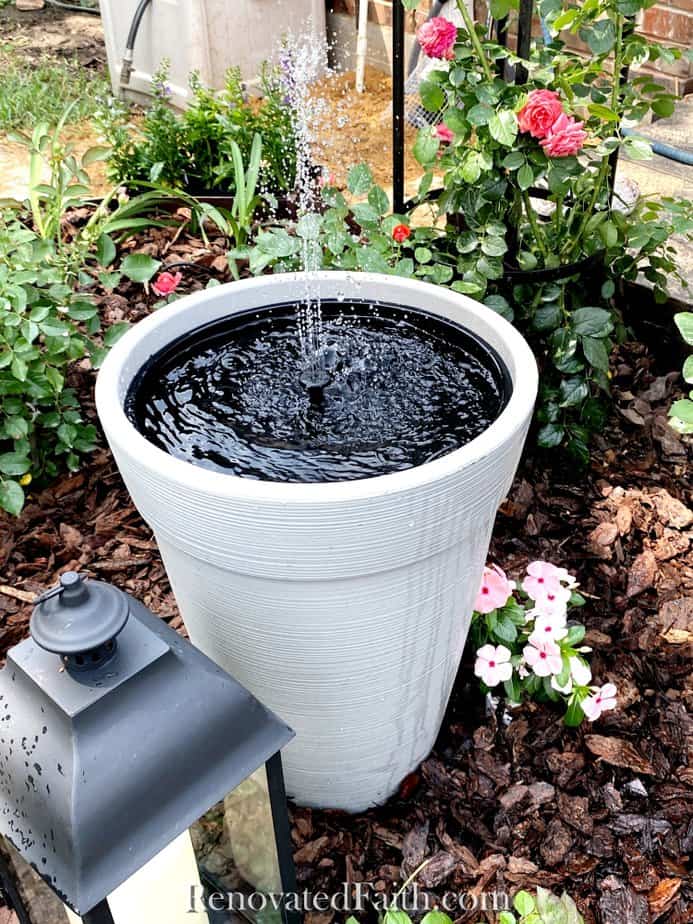
Renovate Your Faith: What Kept Me From Conquering My To Do List
I always get intimidated when I try something new because I don’t know if the project will turn out like I envision. That was the case with drip irrigation and so many other projects on the blog. But to overcome the intimidation factor, I started making a change in I approach DIY projects and even my daily to do list. You can read more about that here: What Kept Me From Conquering My To Do List
How Long Should I Run My Drip Irrigation For Each Watering?
With two 2-gallon per hour emitters on each plant, each rose bush will get 4 gallons an hour. I know that sounds excessive, but I just run my system for 20 minutes per zone.
So, 20 minutes is 1/3 of an hour, so 1/3 of 4 gallons is 1.3 gallons per hour. So, running my system for 20 minutes gives each rose 1.3 gallons. During the early spring and fall, I water twice a week, but during the summer, I water three times a week and might tack on an extra five months if it’s crazy hot.
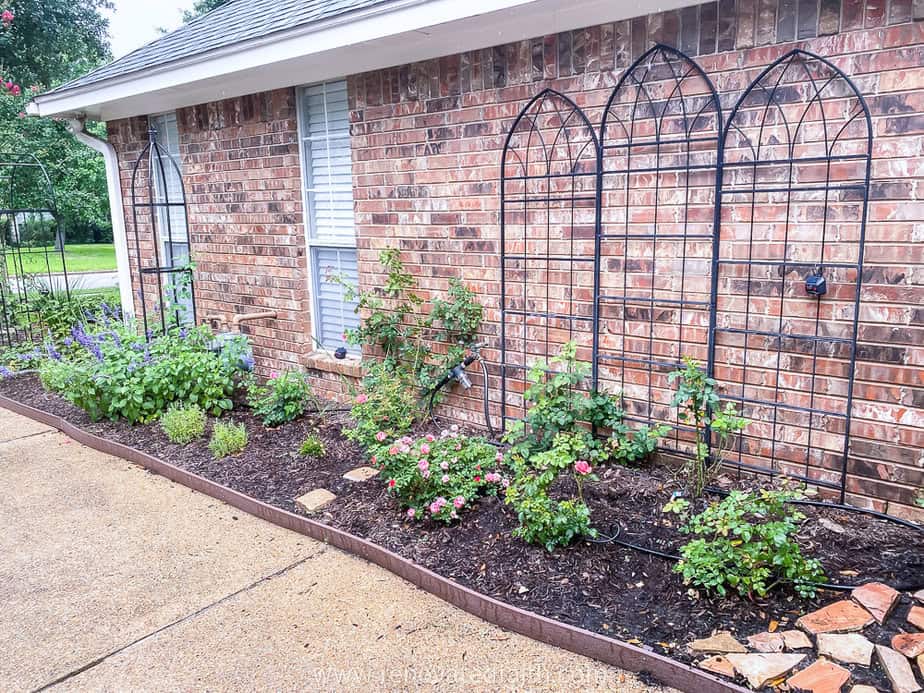
How to Automate Your Drip Setup
After I got more comfortable with my drip setup, I added a timer for each zone (flower bed area) and I also have a timer on my zone for potted plants.
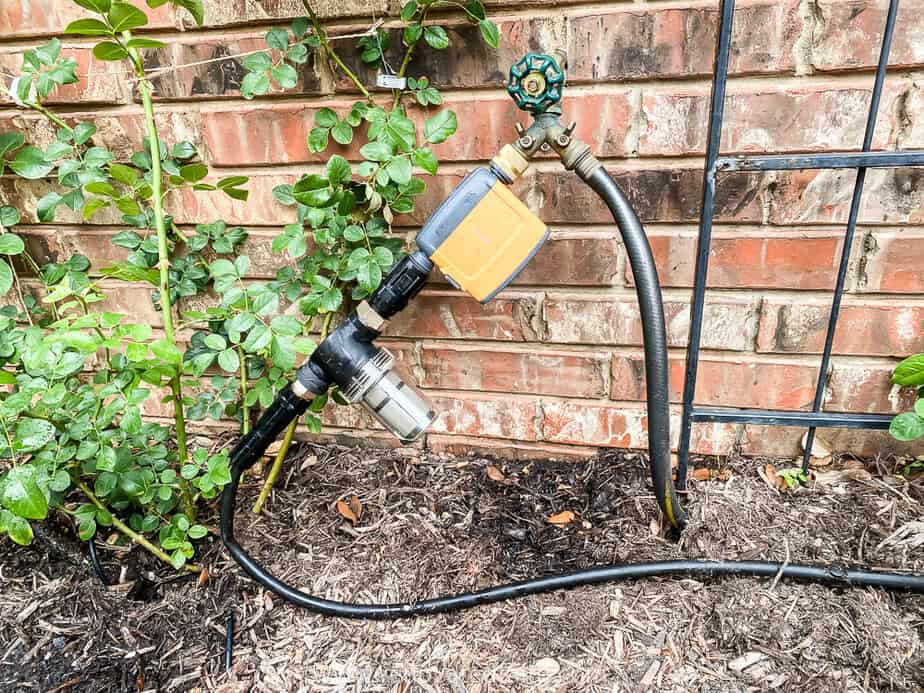
It’s pretty great because I control it all from an app on my phone: Wifi Drip Timer
You can see how to run drip for potted plants here: How to Run Drip Irrigation for Pot Plants
Drip irrigation has been such a blessing and I’m so thankful I don’t have to risk the health of my roses and even my own health by trying to keep up with hand watering in the heat.
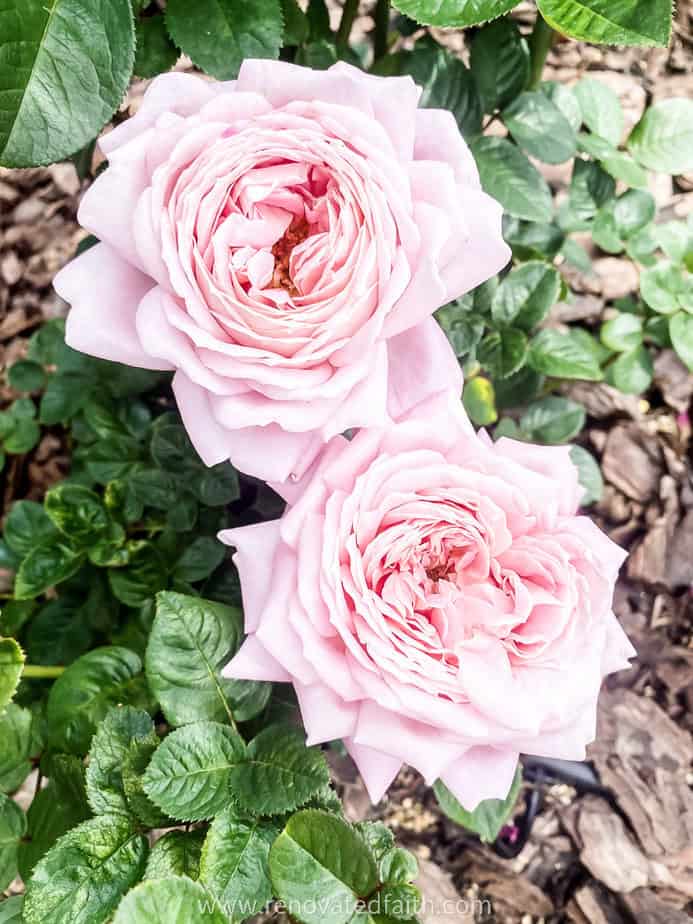
Growing roses is hard, and there’s a lot of work behind each one of those beautiful blooms. But this drip irrigation system has made this hobby so much more doable and enjoyable. I also see a difference in my roses’ health because they consistently get all the water they need, even during the hottest Texas summers.
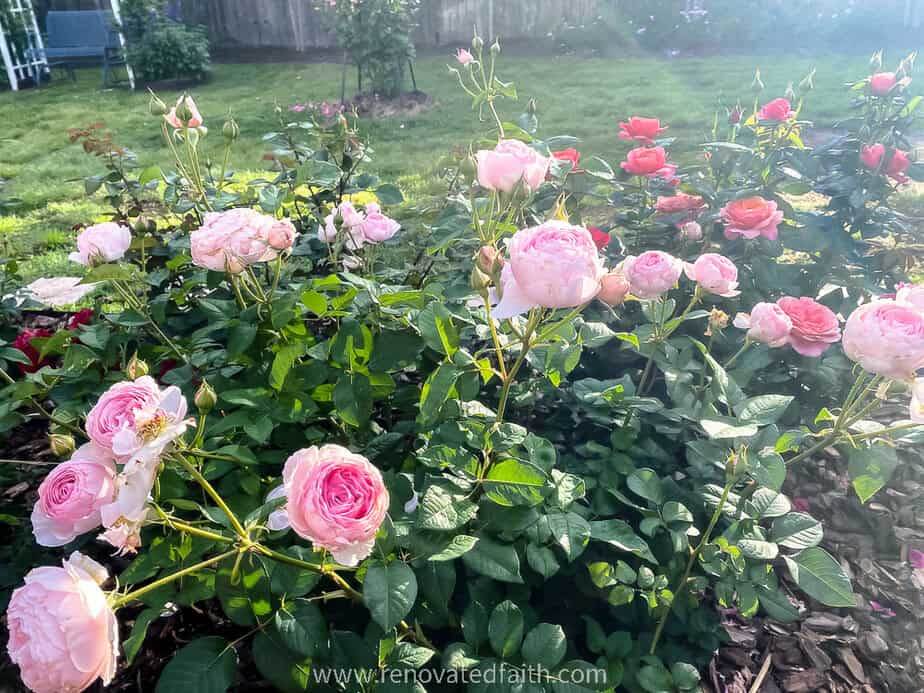
Drip Irrigation Design and Installation for Beginners – Related Posts
How to Set Up Drip Irrigation for Potted Plants
Easy DIY Solar Fountain From a Plastic Planter
50 EASY Landscaping Ideas For The Front of Your House, 2024
How to Spray Paint Patio Furniture (Ultimate 2024 Guide & Video!)
DIY Patio Furniture Restoration (Get a Pro Finish on a DIY Budget)
How to Paint Wrought Iron Patio Furniture (Like a Pro!)
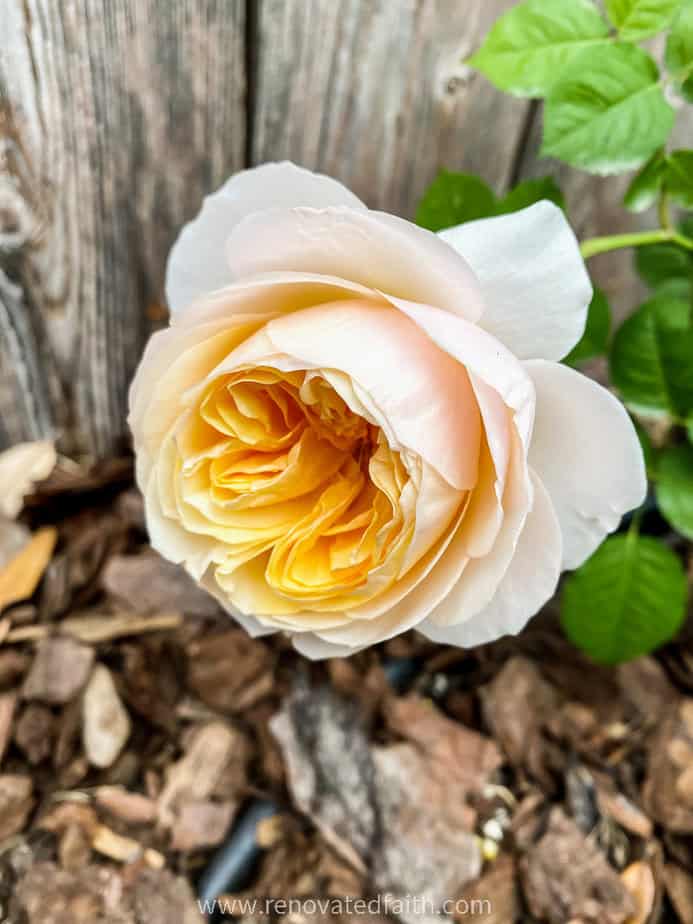
Final Thoughts on Setting Up Drip Irrigation for Roses and Landscape Plants
Now, instead of slaving over my roses by trying to keep them watered in the summers, I can use that time enjoying them.
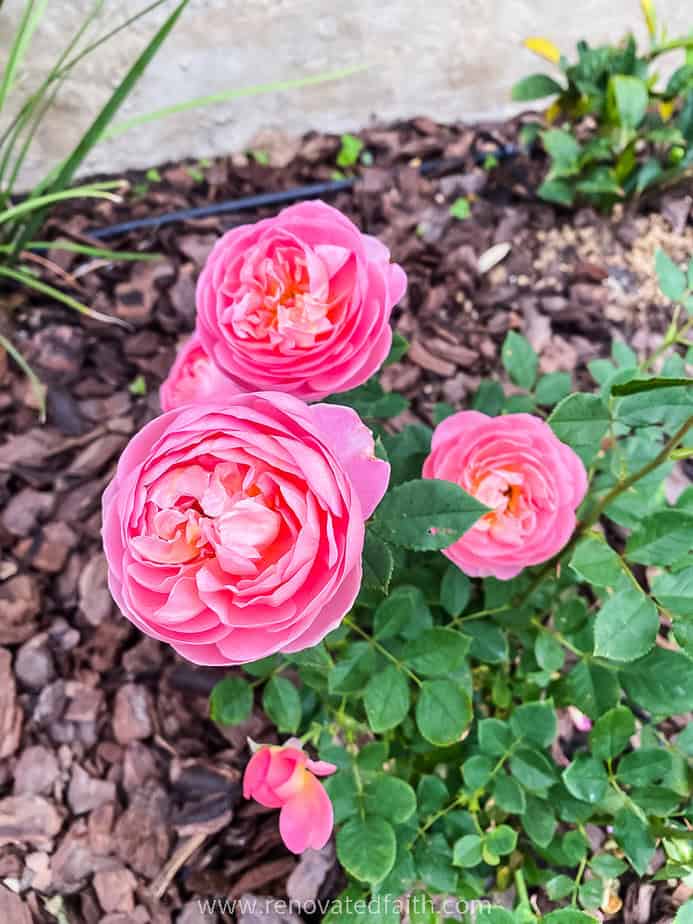
Installing drip irrigation was one of the best things I have done for myself and my plants! I’m so thankful I don’t have to water in the miserable heat and my plants are getting all the water they need to make huge blooms.
If you have any questions or thoughts, comment below and I will get back to you soon! Don’t forget you can join the email newsletter and get access to the free printable library here: Subscribe to Get Free Printables!
Blessings,
Karin
How To Set Up Drip Irrigation for Roses and Landscape Plants
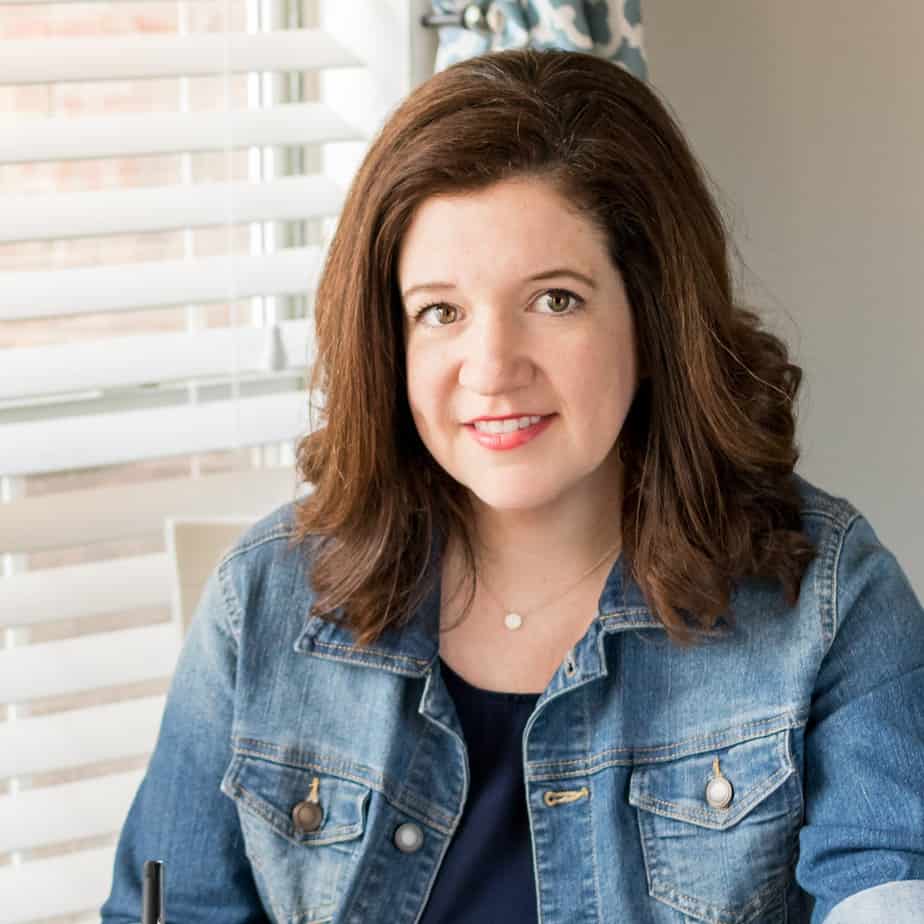
Karin Peters is a DIY expert and the creator of Renovated Faith. She is a furniture painter, a home design consultant, and a tenacious problem solver determined to help you transform your house into a home. With 17 years of experience with DIY home improvement, she researches and analyses professional processes to adapt them to be easy and cost-effective for DIYers. She then tests every project and product before it appears on the site in a detailed, step-by-step format. After attending Texas A&M University, she received her Master of Divinity with Biblical Languages at Southwestern Baptist Theology Seminary. Her passions unite in Renovated Faith, which shows readers how to create a home that serves them so they can pursue their God-given purposes. About Renovated Faith | Editorial Policy | Facebook | Twitter | LinkedIn

Karin, your article on denigration was so timely for me! I’ve been losing my rose bushes this summer and thought it was just because of the extreme heat of this summer and last. You’ve reminded me that I need to water my roses more than the once a week that I’m allowed in my city. But also I’m excited to know how to install drip irrigation! Thank you so much!
Hey Dana, Yes, roses need SO much water. I’m so glad this post was helpful! – Karin